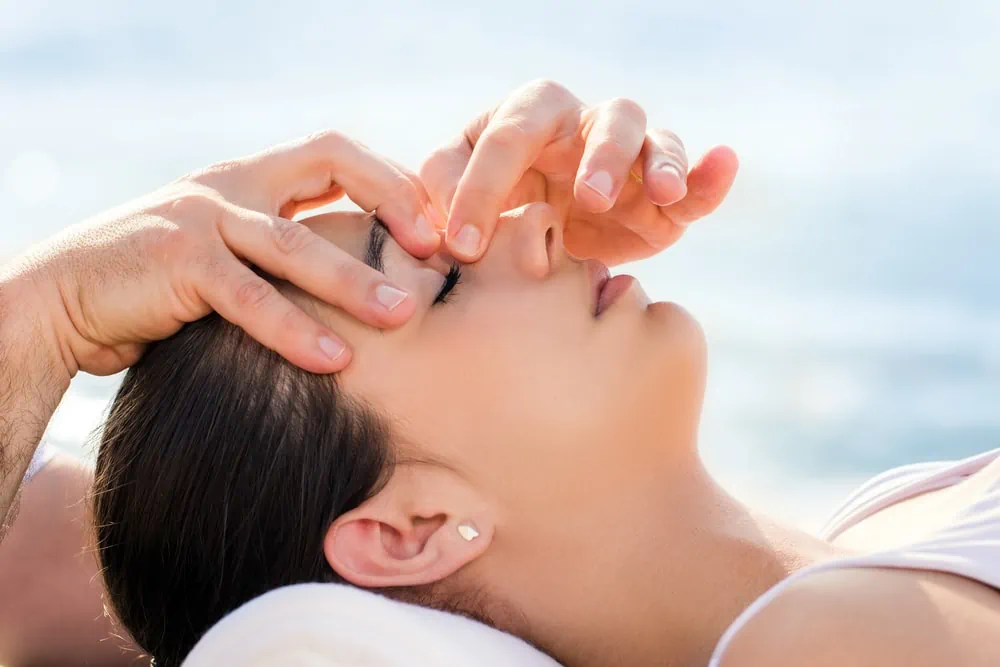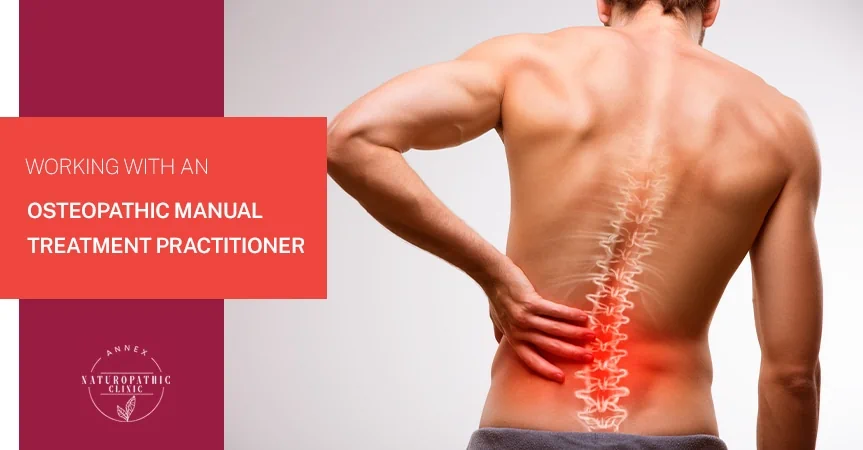What is Osteopathy? Why are people talking about it?
Do you have pain or discomfort in your body you want to change? Have you been seeing multiple practitioners and you are not quite making the progress you would like? Do you have a recurring experience or sensation in your body that nobody understands? Do you have an injury you haven’t recovered from?
If so, osteopathic manual treatment (OMT) may be for you. We are going to help you understand Osteopathic Manual Treatment (Classical Osteopathy) and what happens during an osteopathic treatment.
You may have heard the words Osteopathy, Osteopath, Osteopathic Practitioner, Classical Osteopathy, Osteopathic Manual Therapy Practitioner, and Osteopathic Manual Treatment Practitioner. Do they all mean the same thing? In other countries in the world – yes. In Canada – no. Confusing? Yes. We are going to help you with the confusion.
What is an Osteopathic Manual Therapy Practitioner?
An OMT Practitioner uses the principles of Classical Osteopathy in their manual treatment of people – meaning they use their hands (palpation) to move your body. They manipulate the tissues and structure of your body to help your body do what it knows to do – self-heal, self-regulate and maintain balance (homeostasis). When we maintain balance we have health.
They have studied the foundation and principles of Osteopathy developed by Dr. Andrew Taylor Still. OMT Practitioners are highly skilled, completing 4 (or more) years of training with at least 1000 supervised clinical hours.
OMT practitioners understand the structure and function of the body are interrelated – by manipulating the body, they can help the body function better. Canada is one of the very few countries that do not allow the designation of a doctor for this type of training. In Canada OMT practitioners, covered by insurance companies, will have the designation of MOMSc (Masters of Osteopathic Manual Science)or DOMP (Diploma of Osteopathic Manual Practice).
Osteopath vs Osteopathic Manual Therapy Practitioner
A DO, or Doctor of Osteopathy, is a person who has studied Osteopathy in a medical school in the United States or another country. DOs are trained to use pharmaceutical, surgical and manual therapy approaches for medical illnesses of the human body. There are no medical schools for Osteopathy in Canada. Although there are a small number of DOs practising in Canada, the Medical Act 1991, makes it a legal issue that only DOs, who are members of the College of Physicians and Surgeons, could use the word ‘osteopath’ and ‘osteopathy’.
In many countries in the world, a person can train in a public or private healthcare school to study and learn about Classical Osteopathy, or Osteopathic Manual Treatment for injuries or imbalances of the human body.
The WHO considers Osteopathic Manual Therapy as a TM/CAM (Traditional Medicine/Complementary and Alternative Medicine), and has established benchmarks for the training of OMT Practitioners.
This benchmark document states:
“Osteopathic practitioners use their understanding of the relationship between structure and function to optimize the body’s self-regulating, self-healing capabilities. This holistic approach to patient care and healing is based on the concept that a human being is a dynamic functional unit, in which all parts are interrelated and which possesses its own self-regulatory and self-healing mechanisms. One essential component of osteopathic health care is osteopathic manual therapy, typically called osteopathic manipulative treatment (OMT), which refers to an array of manipulative techniques that may be combined with other treatments or advice, for example on diet, physical activity and posture, or counselling.”
Source: https://apps.who.int/iris/handle/10665/44356
OMT Practitioner vs. Chiropractor vs Physiotherapist
Dr. Still developed Osteopathy (now often referred to as Classical Osteopathy) as a medical manual therapy practice in 1874. This form of manual therapy treats the whole body. It uses many of the same techniques as other manual therapies like Chiropractic, Physiotherapy and massage.
Many manual therapies have their origin in Classical Osteopathy and use techniques developed by Osteopaths. Therapies such as Athletic Therapy, Chiropractic, CranioSacral Therapy and Polarity Therapy all draw principles from Classical Osteopathy teachings.
Who Benefits From Osteopathic Treatment?
Our osteopathic practitioner at ANC, serves people of all ages, from newborns to the elderly. We welcome people of all genders, cultures and traditions, providing a safe environment for all.

Osteopathic treatment can benefit many injuries and conditions – such as:
- Back pain
- Repetitive Strain Injury
- Leg, foot, ankle pain
- Frozen Shoulder
- Hip pain
- Breathing problems
- Headaches, migraines
- Concussions
- Joint and muscle pain
- Digestive discomfort
- Lymph problems
- Anxiety, depression
- Shoulder and Neck Pain
- Stress, overwhelm
And much more. Let’s discuss some of the main benefits in more detail.
1. It Can Relieve Back Pain
Back pain is a common concern for many individuals, and it can be difficult to both diagnose and treat. Whether it is a result of posture, injury, or another unknown reason, classical osteopathy offers treatment solutions which may help. Treatment of back pain involves gentle manipulation of muscles and soft tissues, but also joints as well.
Even if you’re not suffering from back pain, classical osteopathy can be used as preventative medicine. Your osteopathic manual practitioner can use various techniques to diagnose potential areas of concern to ensure you remain pain-free in the future.
2. It Can Improve Sleep
If you’re suffering from chronic pain or stress, you know how disastrous this can be for your sleep health. Sleep health is all about quantity and quality – getting enough sleep, and making sure the sleep you do get is restful.
Experiencing mental or physical discomfort can lead to a lack of proper sleep, which in turn can make your pain worse. By restoring your body’s natural healing mechanisms and ensuring your body is functioning properly, classical osteopathy may help naturally improve your sleep quality.
If you’re struggling with a sleep disorder such as insomnia, classical osteopathy can assist you in getting a good night’s sleep every night.
3. It Can Reduce Discomfort From Chronic Illnesses
Classical osteopathy is not only used as a treatment for conditions involving your muscles and joints. It is also used to treat other chronic illnesses that affect various parts of your body.
Asthma and various digestive problems including irritable bowel syndrome may benefit from classical osteopathic treatments. Classical osteopathy may also help relieve symptoms of arthritis by reducing inflammation and improving circulation.
Unlike other kinds of manual therapy, classical osteopathy affects more than your musculoskeletal system.
4. It Can Help Prevent Injury
Preventing future injuries can be just as important as dealing with existing ones. Your osteopathic manual therapy practitioner can work with you to determine what your body needs to stay healthy, which may include posture advice, various stretches, exercises, and stress reduction.
Classical osteopathy encourages the body’s natural healing mechanisms, which can have positive effects such as reducing scars. Your body will thank you for catching potential injuries before they happen.
5. It Can Be Relaxing
Classical osteopathy is known to reduce stress levels, leaving you relaxed and ready to take on the day. This relaxation may be shown through increased circulation and reduced blood pressure.
You may also find your stress levels are much lower following your treatment. This is because of classical osteopathy’s effects on your nerve supply and immune system, reducing tension and improving mood and energy levels.
Our osteopathic practitioner at ANC has experience with amateur and professional athletes, dancers and musicians; complex chronic pain, complex chronic illness, neurological illness and the treatment of trauma and complex PTSD.
What to Expect in an Osteopathic Treatment?
You are the centre of attention at your appointment. Your body is the expert on what is happening to your body. You will be listened to, asked to share as much information as you can and asked to participate in what is yours to do in your health journey.
Your OMT Practitioner is there to support you in improving your health and wellness and reaching your individual goals.
Initial Assessment and Treatment
Before your first appointment, you will have an online intake form to complete. Your practitioner will review this prior to your visit. You will have a discussion with your OMT Practitioner and if time, you will have a full body treatment.
Physical Assessment
The initial physical examination includes an assessment of your posture and using palpation an assessment of your body tissues and the range of motion of your joints. You will be asked to be in several different positions – standing, seated, and lying down.
How Often Do I Need to See an OMT Practitioner?
The length of time for your complete osteopathic treatment varies depending on your unique situation. Often people with recent injuries or pain improve in 2 – 6 sessions. For chronic pain or chronic illness that has been present for a long time, it can take longer to see improvement. Often the initial improvement happens within 6 – 12 appointments, with progressive improvement occurring over a longer period of time.

The space between treatments also varies depending on your unique situation. Some people come once a week, while some come once every 2 or 3 weeks. In the beginning, treatments are closer together.
Many people choose maintenance or preventative treatments after their initial treatments and will come once every couple of months or a couple of times a year. In some acute situations, a person may be asked to come in twice a week. When this happens you are charged for one appointment only for that week.
What to Do After an Osteopathic Treatment?
After treatment, your body will be processing for 1 – 3 days, while it integrates the treatment to all cells and tissues of the body. During this time it is suggested you take good care of yourself.
For example: hydrate well, go to sleep at a regular time, have a daily walk or some other general range of motion activity or take a sea salt bath on the 2nd or 3rd day if your muscles are sore. Ask our OMT Practitioner why you should not use Epsom salt baths. You may also be given exercises or recommendations specific to you and your treatment.
Get Your Treatment At Annex Naturopathic Clinic
The osteopathic practitioner at Annex Naturopathic Clinic (ANC) educates you about your body and your current situation. Any time you have a question about what they are doing in your treatment – ask and you will receive an answer. Your practitioner knows exactly what they are working with at all times.
You will also learn about posture, basic lifestyle habits and exercises you can do to help yourself.
In situations of chronic pain, you will learn how to manage your pain and help keep yourself in a forward-moving direction. You will learn about the different types of pain you are having along with how and why the pain may cycle.
In situations of overwhelm or trauma, you will learn how and why your body responds the way it does along with how this interacts with your mental and emotional cycles. You will learn how to track and respond to all triggers and why your memories surface the way they do.
Frequently Asked Questions About Osteopathic Appointment
What Do I Wear to an Osteopathic Appointment?
In Canada, osteopathic treatment occurs with clothes on. Wear comfortable loose-fitting clothing to your osteopathic treatments. Your body will be moved around so you will want to be comfortable while this is happening.
How Long Are Osteopathic Appointments?
Your first appointment is 1 hour. Most following appointments are 30-45min. An acute follow-up is usually 15 minutes. Appointments that focus on the musculoskeletal system are shorter. Those with a focus on other systems of the body (nerves, organs, circulation) are often longer.
Is Osteopathic Treatment Covered by My Insurance Benefits?
The osteopathic practitioner at ANC is a member in good standing of OstCan. This osteopathic association requires a specific level of training and has a board exam. Members of this association are covered by Canadian insurance benefits plans.
Remember, all OMT Practitioners bring their own life experiences and training to their practice. There are some osteopathic programs that are short. There are some health professionals who take short courses and use osteopathic techniques in their service – this is not osteopathic treatment. Be wise. Be aware. Ask good questions about the training for your OMT Practitioner to make sure you find the right fit for you.
A Word From the Author
I humbly and respectfully honour the original peoples of the land I currently live and serve on. In Toronto, I acknowledge the original peoples – the Mississaugas of the New Credit, Anishnabeg, Chippewa, Haudenosaunee, and Wendat. The original peoples are and always will be the original caretakers of this land. In this area, Toronto was re-formed under Treaty 13 with the Mississaugas of the New Credit, and the Williams Treaty with various Mississuagas and Chippewa bands (Anishnabeg), while Oakville was re-formed under Treaty 14 with the Mississaugas of the New Credit I give thanks for the opportunity to live, serve and share on this land. This land is now home to a diverse Turtle Island Indigenous population including Inuit and Metis, as well as a diverse international Indigenous population.


